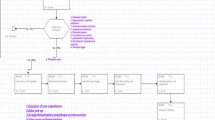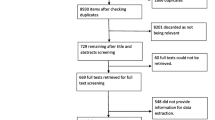Abstract
Policy research and analysis dictates that in every decision to be made, good government principles have to be considered for efficient and effective operations and practices. Likewise, human rights–based approach to development and governance is one of the recommended perspectives in policy development and advocacy at all levels of the institutional structure. In the Philippines, several attempts are made to link policy and governance perspective in developing the national and local development plans. Indicators of performance measurements in development programming are periodically reviewed for reforms. One of the institutions that can be cited is the Department of Health (DOH), where, in this chapter, our analysis will illustrate the types and nature of policies issued and the governance principles adopted in the system implementation. Particularly, the discussion will include the hospital regulatory system of licensing involving three major stakeholders, i.e., the central and regional offices and the regulated hospital industry, both government and private hospitals. In the case of DOH, this chapter will also explore and discuss the policy agenda on hospital regulatory procedures and system of licensing the hospitals, its implementation mechanisms and evaluation of the practices and processes adopted to attain social development particularly in the health sector.
Access this chapter
Tax calculation will be finalised at checkout
Purchases are for personal use only
Similar content being viewed by others
References
Administrative Order No. 68-A s. 1989 Revised Rules and Regulations Governing the Registration, Licensure and Operation of Hospitals in the Philippines
Administrative Order No. 70-A s. 2002 which was implemented in January 2003
Administrative Order No. 147s.2004
Administrative Order No. 29s.2005
A.O. No. 2007 – 0021 Streamlining and Harmonization of Regulatory Processes
A.O. No. 2010–0035 Re-Centralization of Issuance of DOH – PTC, LTO of New/Initial Hospitals and Renewal of LTO of Levels 3 & 4 Hospitals
A.O. No. 2011 – 0020 Streamlining of Licensure and Accreditation of Hospitals
D.M. No. 2011–0135 A Survey of Services and Equipment Available in Hospitals Nationwide
DOH Executive Order No. 102 Redirecting the Functions and Operations of the Department of Health
Evaluation of the Harmonization and Streamlining of Hospital System: Project Overview, January 2011
Republic Act No. 4226, June 19, 1965: An Act Requiring the Licensure of All Hospitals in the Philippines and Authorizing the Bureau of Medical Services to Serve as the Licensing Agency
Republic Act 7160 Local Government Code of 1991
www.apps.leg.wa.gov (WAC 246-320-11 Department responsibilities – Licensing – Adjudicative proceedings)
www.chd2.doh.gov.ph/index.php/2011-10 (Hospital)
www.llga.gov/Commission/jcar/admincode (Joint Committee on Administrative Rules-Administrative Code on Public Health)
www.nj.gov/health/healthfacilities/documents (N.J.A.C. TITLE 8 Chapter 43 G Hospital Licensing Standards)
www.scribd.com. May 11, 2011 (Health Policy Notes – Sustaining the Gains of Effective Regulation for Health)
Author information
Authors and Affiliations
Corresponding author
Editor information
Editors and Affiliations
Annexures
Annexures
1.1 Annexure A
1.1.1 Policy Reforms Since Evolution on Philippine Health Regulatory System
The Philippines recognizes health as a basic human right. The protection and promotion of the right to health of every Filipino and instills health consciousness among them is given emphasis by the government.
Significant milestones in the country’s health care delivery system were adoption of Primary Health Care in 1979, integration of public health and hospital services in 1983, reorganization of the Department of Health in 1987, and devolution of health services in 1992 to Local Government Units in accordance with the Local Government Code of 1991 (Republic Act 7160). The DOH streamlined its organization and functions in 2000 through Executive Order No. 102.
1.1.1.1 Health Sector Reform Agenda
Health regulation has become a major function of the Department of Health, especially after the devolution of health services to the LUGs. In accordance with Executive Order 119 issued in 1987, the regulatory functions of the DOH are vested in the following agencies:
-
Bureau of Food and Drugs that handles policy formulation and monitoring on matters concerning processed food, drugs, medicines, medical devices, cosmetics and household products containing hazardous substances, and the formulation and implementation of rules, regulations and standards;
-
Bureau of Licensing and Regulation (BLR) is the formulation of policies and establishment of standards for the licensing and regulation of hospitals, clinics and other health facilities, including the enforcement of laws concerning the operations of these facilities.
-
Bureau of Research and Laboratories that is responsible for developing and formulating plans, and policies for the accreditation and licensing of laboratories, blood banks and entities handling biological products;
-
National Quarantine Office who is in charge of formulating and implementing rules and regulations to prevent the entry and spread of quarantinable diseases into the country subject to international health regulations. It has supervision over the sanitation of all ports and airports of entry including their environs and the vessels and aircraft using these entry points.
-
Radiation Health Service is responsible for formulating and implementing standards for radiation facilities and devices, whether used in medicine, dentistry, veterinary medicine, industry, education, research, anti-crime, military and consumer applications.
FOURmula One for Health
-
FOURmula One for Health (F1) is aimed at achieving critical reforms with speed, precision and effective coordination directed at improving the quality, effectiveness, equity, and efficiency of the Philippine health system. It is directed towards achieving the end goals of better health outcomes, a more responsive health system, and more equitable health care financing. These goals are aligned with the Millennium Development Goals (MDGs) and Medium Term Philippine Development Plan (MTPDP) and are articulated in more detail in the National Objectives for Health.
-
By virtue of Executive Order 102, “Redirecting the Functions and Operations of the Department of Health,” the regulatory agencies are composed of the Bureau of Food and Drugs, the Bureau of Health Facilities and Services which is formerly Bureau of Licensing and Regulations, the Bureau of Health Devices and Technology, and the Bureau of Quarantine.
-
Health regulation reforms aim to assure access to quality and affordable health products, devices, facilities, and services, especially those commonly used by the poor. One of the identified strategies under this reform component is Harmonizing and streamlining licensing, accreditation, and certification systems. In order to harmonize and streamline regulatory processes for health facilities; to reduce transaction costs and the costs of provision of regulatory services; and to increase customer trust and satisfaction, a One-Stop Shop System for the Licensure of Health Facilities was established at the DOH Central Office and the Center for Healthy Development (CHD). The system include the licensure of hospitals but eventually cover other regulated health facilities that provide ancillary services such as dialysis clinics, ambulatory surgical clinics, medical facilities for overseas workers and sea farers, and similar health facilities
-
One of the features of the One-Stop Shop Licensure System is that a single license to operate is issued to the health facility that covers all services provided within the premises of the health facility, including diagnostic and other ancillary services. Another important feature is the automatic renewal of license where in the license to operate is renewed upon submission of required documents without prior inspection of the health facility. Compliance to regulatory standards is determined during intensified monitoring visits by the regulatory officers from CHDs and DOH regulatory bureaus.
1.2 Annexure B
1.2.1 Policy Mandates and Directions on Hospital Regulatory System
The basis of the legal authority for the inspection standards is Republic Act No. 4226, June 19, 1965: “An Act Requiring the Licensure of All Hospitals in the Philippines and Authorizing the Bureau of Medical Services to Serve as the Licensing Agency.”
Table 4.1 demonstrates the Issuances of the Department of Health relative to the Implementing Rules and Regulations on licensure of hospitals from 1989 to 2005. In Administrative Order No. 68 – As. 1989 Revised Rules and Regulations Governing the Registration, Licensure and Operation of Hospitals in the Philippines, hospitals were classified into primary, secondary, and tertiary. Tertiary includes both teaching and nonteaching hospitals. This Order was superseded by Administrative Order No. 70-A s. 2002, which was implemented in January 2003. However, the Philippine Hospital Association lobbied against this Order which led to its suspension on November 19, 2003. Again, there was a move to restrain the implementation of Administrative Order No. 147s. 2004 because of the clamor of some hospital owners to delete infirmary from the hospital nomenclature. The current Administrative Order No. 29 s. 2005 was implemented in January 2006 categorizing hospitals into four (4) levels.
Rights and permissions
Copyright information
© 2015 Springer India
About this chapter
Cite this chapter
Sia, M.C.R., Ferrer, O.P. (2015). Policy Reform and Governance in Philippine Health Regulatory System. In: Gurtoo, A., Williams, C. (eds) Developing Country Perspectives on Public Service Delivery. Springer, New Delhi. https://doi.org/10.1007/978-81-322-2160-9_4
Download citation
DOI: https://doi.org/10.1007/978-81-322-2160-9_4
Publisher Name: Springer, New Delhi
Print ISBN: 978-81-322-2159-3
Online ISBN: 978-81-322-2160-9
eBook Packages: Business and EconomicsEconomics and Finance (R0)




